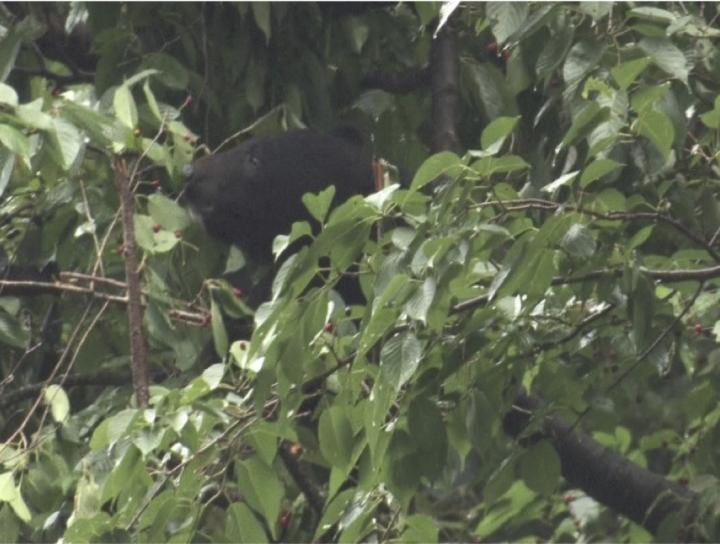
Credit: Hiroshi Yokota
A ten-year study shows that Asian black bears’ diets vary greatly depending on sex, stage of life, and resource availability, providing important information on foraging strategy according to age-sex classes. Researchers in Japan published their findings on April 15 in Mammal Study.
Scientists knew Asian black bears were omnivores, feeding mostly on plants. The bears also eat animal materials such as deer and insects. Their diets change based on the abundance of those resources each season. However, scientists did not previously know exactly how much and under what conditions the bears’ diets changed.
Japanese wildlife scientists and ecologists at Tokyo University of Agriculture and Technology, Forestry and Forest Products Research Institute, and Tokyo University of Agriculture, have analyzed the bears’ diet profiles. Their end goal was to better understand bears’ feeding habits in relation to their age, sex and acorn production.
“Several thousand bears are killed annually as nuisances in Japan. In the context of reducing human-bear conflict, understanding dietary differences among age-sex classes of bears would help to facilitate the management of habitat conditions to preserve a suitable habitat for bears, to separate their habitats and human settlements, or both.” said Tomoko Naganuma, an Assistant Professor at Tokyo University of Agriculture and Technology.
The study took place on a 460 square kilometer area in the southern Ashio-Nikko mountains in central Japan. The research team took hair samples from the backs and shoulders of trapped bears. They first divided out the hair samples by growth rate, so they could later chart bear diets across reproductive season (from June to July) and hyperphagia seasons (from mid-September and October, when bears become more active and eat more to help prepare for winter hibernation). Researchers analyzed the samples for carbon-nitrogen isotope ratios, reliable indicators of the bears’ diets.
The researchers found that the bears’ consumption of plant-based food was relatively constant during the reproductive season among the age-sex classes studied. However, older bears are more carnivorous. Adult males are especially more likely to consume deer than other members within the population. The larger body mass of adult males may be advantageous in competing for food. . During the hyperphagia season, bears were mostly dependent on acorn, regardless of its abundance. However, during years of poor acorn production in the study area, the bears consume increased proportion of animal materials, suggesting that they consume them as alternatives to acorn.
“Because distribution, abundance, and composition of food resources vary in each bear habitat, it will be important to investigate the foraging strategy in various populations,” Naganuma said of next steps in better understanding the relationships between bears and their environment.
###
For more information about the Koike and Naganuma’s laboratory, please visit http://web.
Original publication:
Age- and sex-associated differences in the diet of the Asian black bear: importance of hard mast and sika deer. Tomoko Naganuma*, Shinsuke Koike, Rumiko Nakashita, Chinatsu Kozakai,Koji Yamazaki, Shino Furusaka and Koichi Kaji. Mammal Study, 45(2):155-166 (2020).
*: corresponding author
https:/
About Tokyo University of Agriculture and Technology (TUAT):
TUAT is a distinguished university in Japan dedicated to science and technology. TUAT focuses on agriculture and engineering that form the foundation of industry, and promotes education and research fields that incorporate them. Boasting a history of over 140 years since our founding in 1874, TUAT continues to boldly take on new challenges and steadily promote fields. With high ethics, TUAT fulfills social responsibility in the capacity of transmitting science and technology information towards the construction of a sustainable society where both human beings and nature can thrive in a symbiotic relationship. For more information, please visit http://www.
Contact:
Tomoko Naganuma, PhD.
Assistant Professor
[email protected]
Laboratory of Forest Conservation Biology, Faculty of Agriculture, Tokyo University of Agriculture and Technology, Japan
Media Contact
Yutaka Nibu, Ph.D.
[email protected]
Related Journal Article
http://dx.




